By Andy Winfield
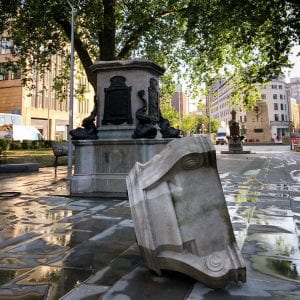 Plants and our history are strongly interwoven, they can evoke personal memories or a collective love of symbolic trees, flowers, scents and sounds; each plant has journeyed side by side with us, our experiences combining to tell a story of our past. Some of these plants have a fleeting appearance, whereas others are so linked with human history that their very mention evokes a deep historical trauma reverberating across continents. This week saw Bristol protestors topple the statue of Colston in the centre of Bristol, one of many men of this city who grew rich through the production of sugar and the selling of African people into slavery. This blog will look at two plants grown in our Tropical zone whose natural adaptations stirred the worst in human greed and brutality, building this city and creating the race divisions we see today.
Plants and our history are strongly interwoven, they can evoke personal memories or a collective love of symbolic trees, flowers, scents and sounds; each plant has journeyed side by side with us, our experiences combining to tell a story of our past. Some of these plants have a fleeting appearance, whereas others are so linked with human history that their very mention evokes a deep historical trauma reverberating across continents. This week saw Bristol protestors topple the statue of Colston in the centre of Bristol, one of many men of this city who grew rich through the production of sugar and the selling of African people into slavery. This blog will look at two plants grown in our Tropical zone whose natural adaptations stirred the worst in human greed and brutality, building this city and creating the race divisions we see today.
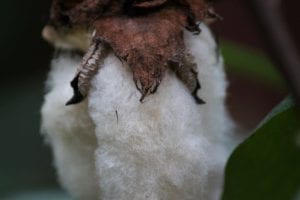
The genus Gossypium, otherwise known as cotton, grows in tropical regions across the globe; there is evidence of its use by humans in Pakistan, Mexico, China and Iran from many thousands of years ago. The attraction is the fluffy fibre that the plant produces to aid seed dispersal; this fibre forms a protective case around the seed and when released from the plant will tumble off. The fluffy case can be woven into a thin fibre to make fabrics that are durable and soft, perfect for the clothes, tablecloths and napkins much loved by new British middle classes in the mid 18th century.
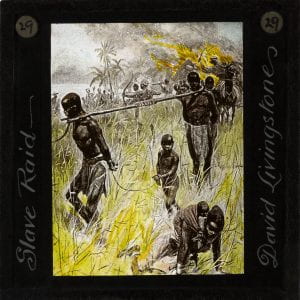
During an early excursion into North America by the Spaniard Coronardo in the 1500s, Peublo people were observed weaving cotton, an ancient way of life for them; Spanish settlers soon adopted this skill and began to grow Gossypium as a crop. As the years ticked by smallholdings turned to farms, farms became huge plantations; by the late 1700s Britain was buying as much cotton as could be produced. The fervour to grow more to sate this demand needed workers, and plantation owners filled the fields with slaves; these were provided by British and European ships who would head to the west coast of Africa and ambush families, communities and villages, capturing people and forcing them to the Caribbean and North America in horrific conditions; 10% of people on the ships died during the journey. Slaves were used throughout the 18th century, and, when in 1793 the cotton gin (short for engine) was invented, enabling plantation owners to separate seed from fibre quickly, production rapidly accelerated once again. The number of slaves in the Southern States rose from 700,000 in 1790 to 3.2 million by 1850 producing crops that fed the hungry British Cotton mills and factories. So powerful were the Southern States that they called their crop ‘King Cotton’ hoping that European, and particularly British, reliance on cotton would secure their backing in any civil war; this proved unfounded as Britain had stockpiles of cotton and had recently abolished slavery. The British government felt that using the military to support a slave cause would be deeply unpopular. The Confederate cause lost the long and bloody civil war which was followed by Lincoln’s 13th amendment abolishing slavery; despite this many ex slaves continued to work on cotton plantations for money, but with heavy restrictions and regular defrauding of wages. To this day America is still a major producer of cotton as it proves one of the largest non food crops in the world.
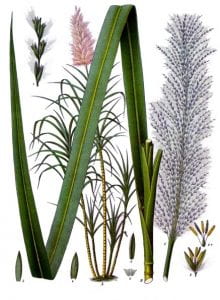 Sugar cane, Saccharum officinarum, is native to South East Asia but has been in cultivation for many years; there is evidence from 2000 years ago of people boiling the juice to a sweet concentrate on the Indian subcontinent. In the 1600s sugar cane was introduced to the British West Indies and plantations were set up close to the coastal areas where the soil was naturally fertile. These British colonies quickly intensified production to cope with the huge demand for sugar at this time and as a result so increased the introduction of slaves from Africa; by 1699 80% of Caribbean residents were African slaves living a grisly life at the hands of the British. While cities here were putting up buildings and growing rich on the sugar trade, the source of that wealth was being harvested with a considerable human cost. James Ramsay, a doctor working on the plantations in 1784 noted a typical day for a slave on the plantations:
Sugar cane, Saccharum officinarum, is native to South East Asia but has been in cultivation for many years; there is evidence from 2000 years ago of people boiling the juice to a sweet concentrate on the Indian subcontinent. In the 1600s sugar cane was introduced to the British West Indies and plantations were set up close to the coastal areas where the soil was naturally fertile. These British colonies quickly intensified production to cope with the huge demand for sugar at this time and as a result so increased the introduction of slaves from Africa; by 1699 80% of Caribbean residents were African slaves living a grisly life at the hands of the British. While cities here were putting up buildings and growing rich on the sugar trade, the source of that wealth was being harvested with a considerable human cost. James Ramsay, a doctor working on the plantations in 1784 noted a typical day for a slave on the plantations:
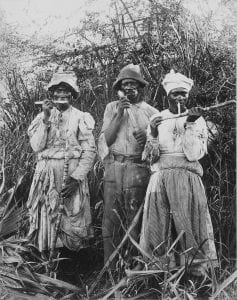 “At four o’clock in the morning the plantation bell rings to call the slaves into the field…. About nine o’clock they have half an hour for breakfast, which they take into the field. Again they fall to work… until eleven o’clock or noon; the bell rings and the slaves are dispersed in the neighbourhood to pick up natural grass and weeds for the horses and cattle (and to prepare and eat their own lunch)… At two o’clock, the bell summons them to deliver in their grass and to work in the fields… About half an hour before sunset they are again required to collect grass – about seven o’clock in the evening or later according to season – deliver grass as before. The slaves are then dismissed to return to their huts, picking up brushwood or dry cow dung to prepare supper and tomorrow’s breakfast. They go to sleep at about midnight.”
“At four o’clock in the morning the plantation bell rings to call the slaves into the field…. About nine o’clock they have half an hour for breakfast, which they take into the field. Again they fall to work… until eleven o’clock or noon; the bell rings and the slaves are dispersed in the neighbourhood to pick up natural grass and weeds for the horses and cattle (and to prepare and eat their own lunch)… At two o’clock, the bell summons them to deliver in their grass and to work in the fields… About half an hour before sunset they are again required to collect grass – about seven o’clock in the evening or later according to season – deliver grass as before. The slaves are then dismissed to return to their huts, picking up brushwood or dry cow dung to prepare supper and tomorrow’s breakfast. They go to sleep at about midnight.”
Even after slavery was abolished in Britain in 1833, and after the biggest business bailout in British history (until 2009) for slaveowners, slaves were forced to continue working on the plantation for another six to four years at 45 hours a week to keep the sugar industry going and ‘teach slaves how to be industrious’.
Bristol profited hugely from this trade, both the supply of slaves and the sales of sugar; at one time there were 22 sugar houses in the city producing refined sugar from the Caribbean crops. One of the beneficiaries of this trade was Edward Colston, a member of the Royal Africa Company; the largest of its kind in England specialising in enslaving African people and profiteering from their forced labour.
The trauma of hundreds of years of oppression is still being felt today by black communities all over the western world; symbols of that trauma have been hidden in plain sight with place names, schools and, until recently, statues dotted all over cities including our own. Bristol’s role in the slave trade had been watered down, it was felt it happened an age and an ocean away with the abolition act in 1833 appearing as a curtain in history concealing the horrors behind it. In Bristol this week there is an empty plinth where Colston’s statue once stood; his absence, rather than erasing history shone a light directly at it, a history that has direct relevance to the protests happening all over the world. It felt like we took a small step forward from a long way back, a step towards acknowledging our role in the historic treatment of black communities and a step towards collective remorse for the crimes of Bristol’s past.


Thanks for making us aware. It is good to explain all aspects of a statue or building existence, for all to understand and truly learn from the past, for a better more humane and ethically appropriate future, for the benefit of civilisation!
Andy, what about tobacco? Coming from Virginia and Caribbean counties and also worked by slaves and with a much more recent history in Bristol, including founding benefactors of our university.
Hi Angela, I wanted to focus on two plants we had in the Tropical Zone and particularly the main plant associated with Colston. As you said, tobacco does have greater relevance to the University and Bristol as a whole, and I know the Senior management team at the University are looking at those links with a view to a more open discussion about them.
Hope you’re well and look forward to a time when we can see you again!